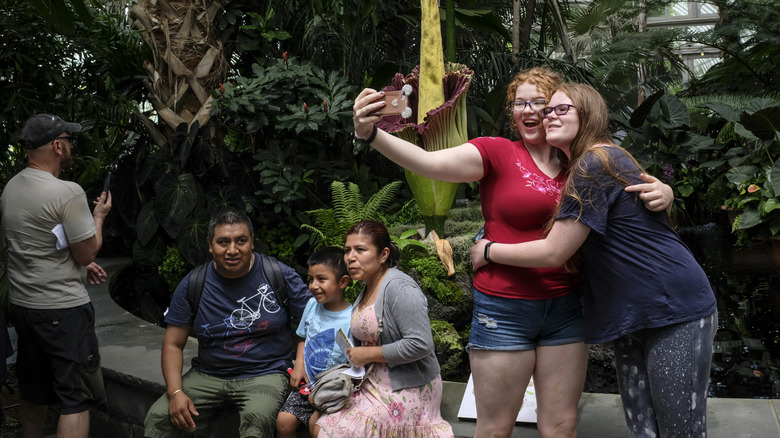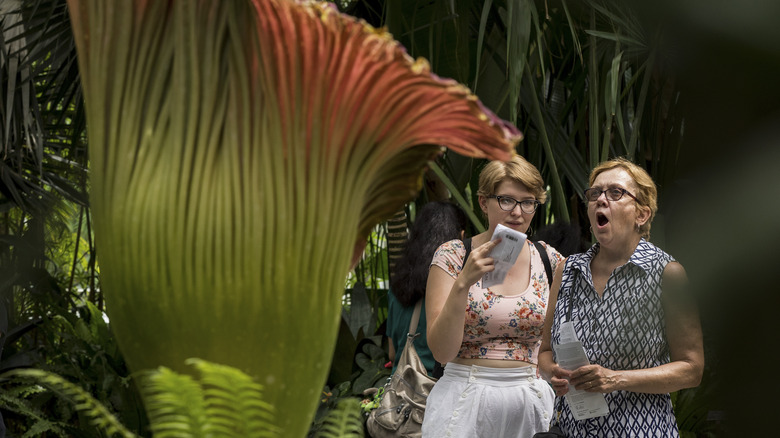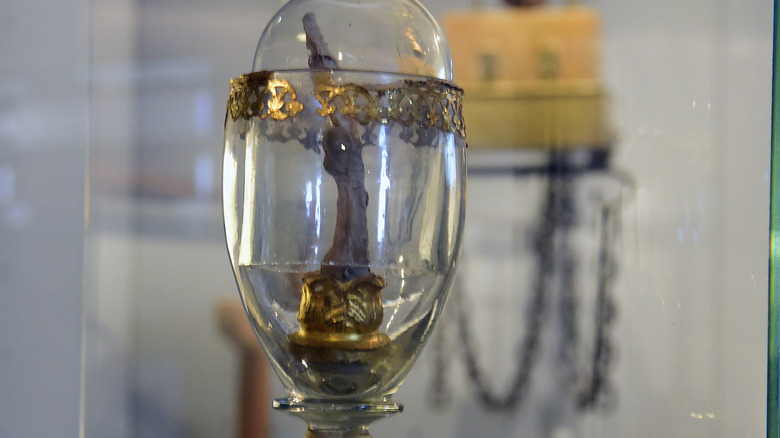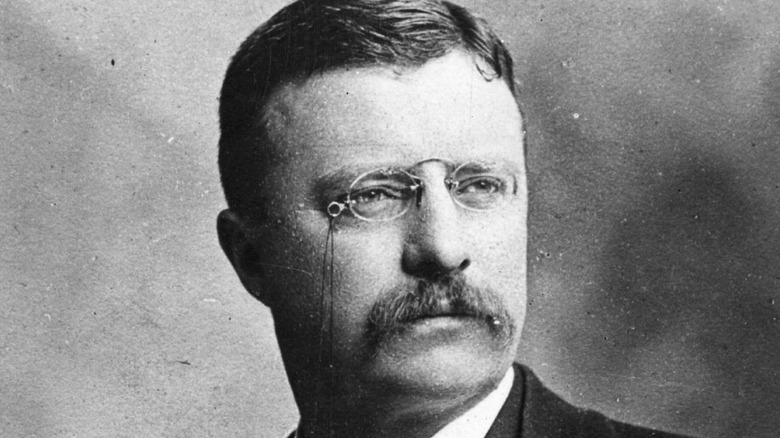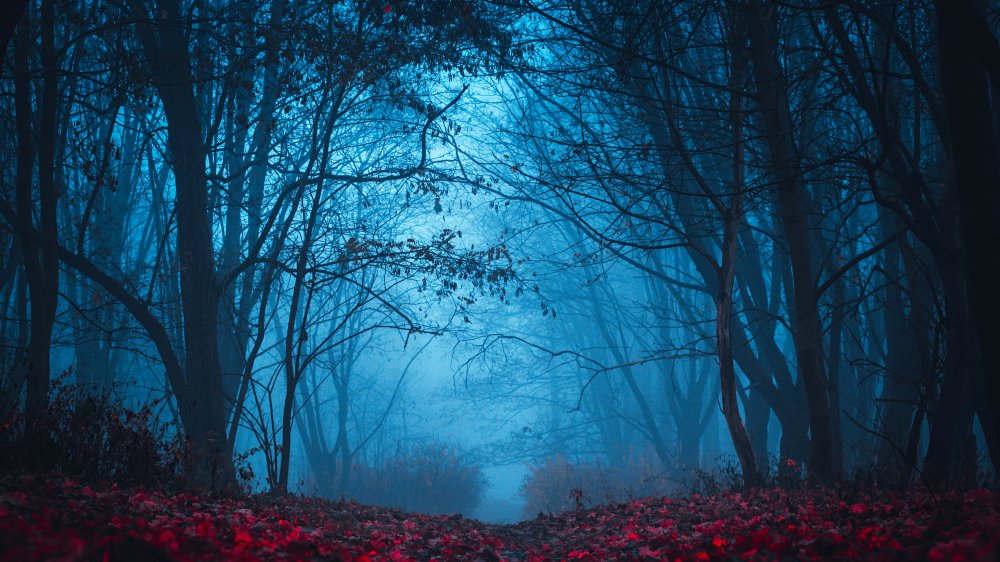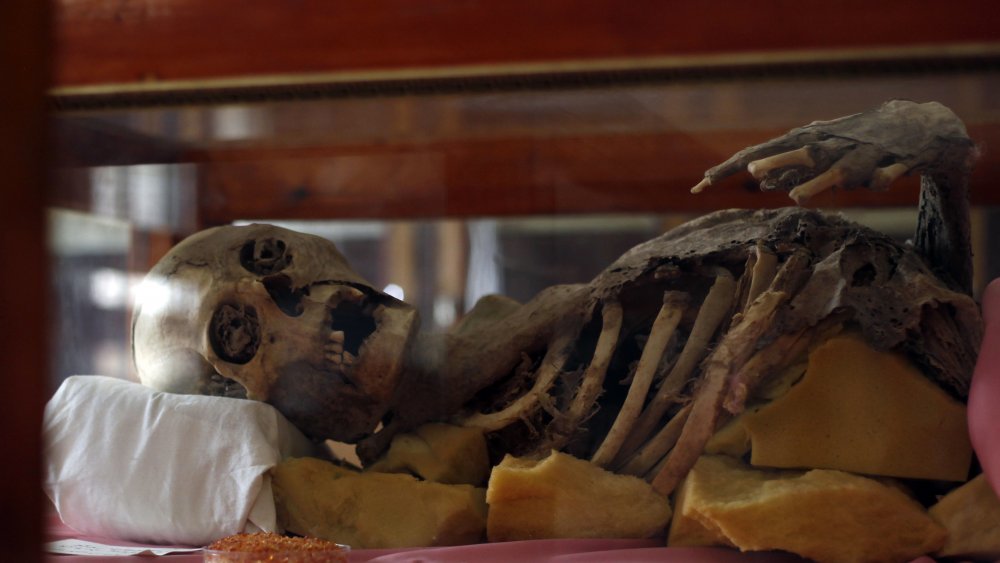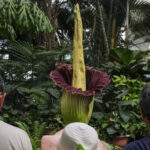
The Bizarre Truth About Corpse Flowers
In May 2021, an abandoned gas station in California’s Bay Area became the scene of a strange sight. As the Associated Press reported, hundreds of people convened upon the nondescript location in order to be a part of an exceptionally rare event: a flower, whose “aroma” is so pungent that it’s been compared to the smell of a rotting corpse. What’s more, the flower only blooms every decade or so. Further still, it’s one of the largest flowers in the world, depending on various botanical minutiae that muddle these kinds of superlatives.
The flower’s caretaker, a local nursery owner who specializes in rare flowers, said that having his plant on display in a less-regulated setting beats having it in a nursery, where spectators can only get so close. “I think everyone’s tripping out that they can walk up and wiggle it and smell it,” the owner said.
Specimens of corpse flowers exist all over the world, including in the wild, where it’s endangered, and in botanical gardens, where they’re prized collectibles — and, when they bloom, tourist attractions.
Amorphophallus titanum is found naturally only on a certain Indonesian island
According to The Eden Project, Amorphophallus titanum only grows on the hillsides of the western side of the island of Sumatra, in Indonesia, where it is considered endangered (or threatened, depending on different sources) due to habitat loss from rainforest destruction.
The leaf-like outer structure (spathe) can grow to 9 to 10 feet in diameter, and the central spike (spadix) can grow up to 6 to 7 feet tall. When cultivated by humans, the plant doesn’t bloom until after 7 to 10 years, and then can go another 7 to 10 years again before the next bloom. Once it’s bloomed, it stays open for approximately 48 hours, during which time its potent stench attracts pollinating insects.
Although it had been around for millions of years before Westerners first laid eyes on it, it was “discovered” by Italian botanist Odoardo Beccari in 1878, according to the Chicago Botanic Garden. Beccari sent tubers and seedlings of the plant back to Europe, and only one, a seedling sent to London, ever bloomed again.
Blooming corpse flowers are tourist attractions
A corpse flower’s bloom is so rare and so striking that, whenever one that’s kept in a publicly-accessible collection, such as a botanical garden, goes into bloom, it becomes a tourist attraction.
For example, in Chicago, in 2015, 75,000 people visited “Spike” after it began to look like it might bloom. Unfortunately, that didn’t happen, according to the Chicago Botanic Garden. In New York, when a corpse flower actually did bloom in 2019, the New York Botanical Garden offered extended hours to accommodate the expected large crowds. And in Nashville, according to The Tennesseean, when a corpse flower at the Nashville Zoo went into bloom, officials put up a webcam to allow visitors to watch it from their homes.
So when is the next corpse flower that’s publicly-accessible expected to bloom in the United States? According to the LuEsther T. Mertz Library, there’s no real way to answer that question. Because the conditions under which the specimens are kept and grown vary from greenhouse to greenhouse, predicting these blooms with any real certainty is a fool’s game. Specifically, the plants are unpredictable, and even when one is starting to bud, it’s difficult to estimate how long it will take before it opens.

Super Rich People Who Are Still Missing To This Day

This Is How Nostradamus Predicted The End Of The World

Why You Should Think Twice Before Using The Overhead Air Vents On Airplanes
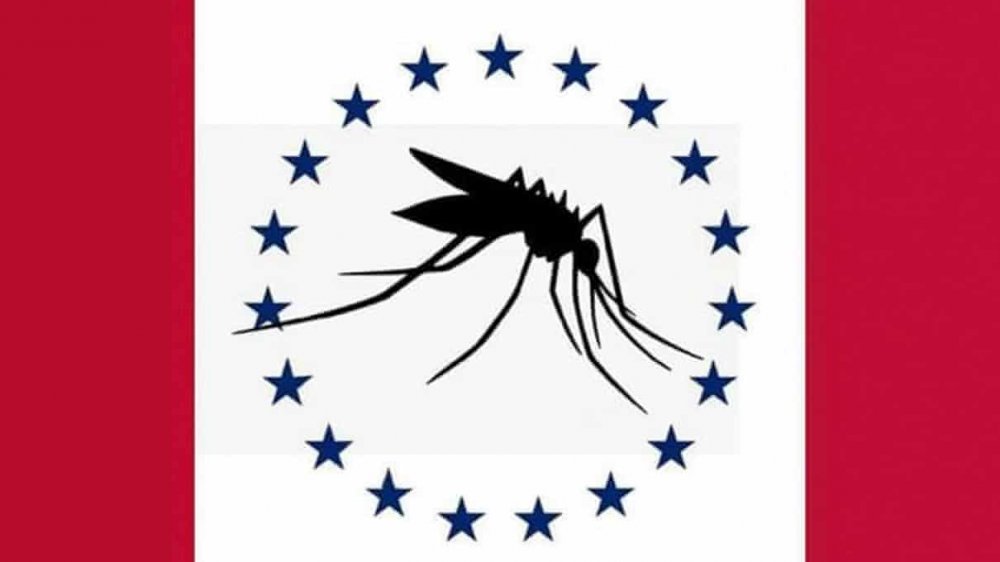
The Truth About Mississippi's Giant Mosquito State Flag

The Bizarre History Of Dowsing Rods

Tsutomu Yamaguchi: The Man Who Survived Both Atomic Bombs

Why Coronavirus Treatments Might Not Be Affordable In The U.S.

Panda Poop Paper Making Tradition Revived In China

How Much Money Does Jeff Bezos Make Per Hour?

Jackalope: The Truth Behind The World's Scariest Rabbit
